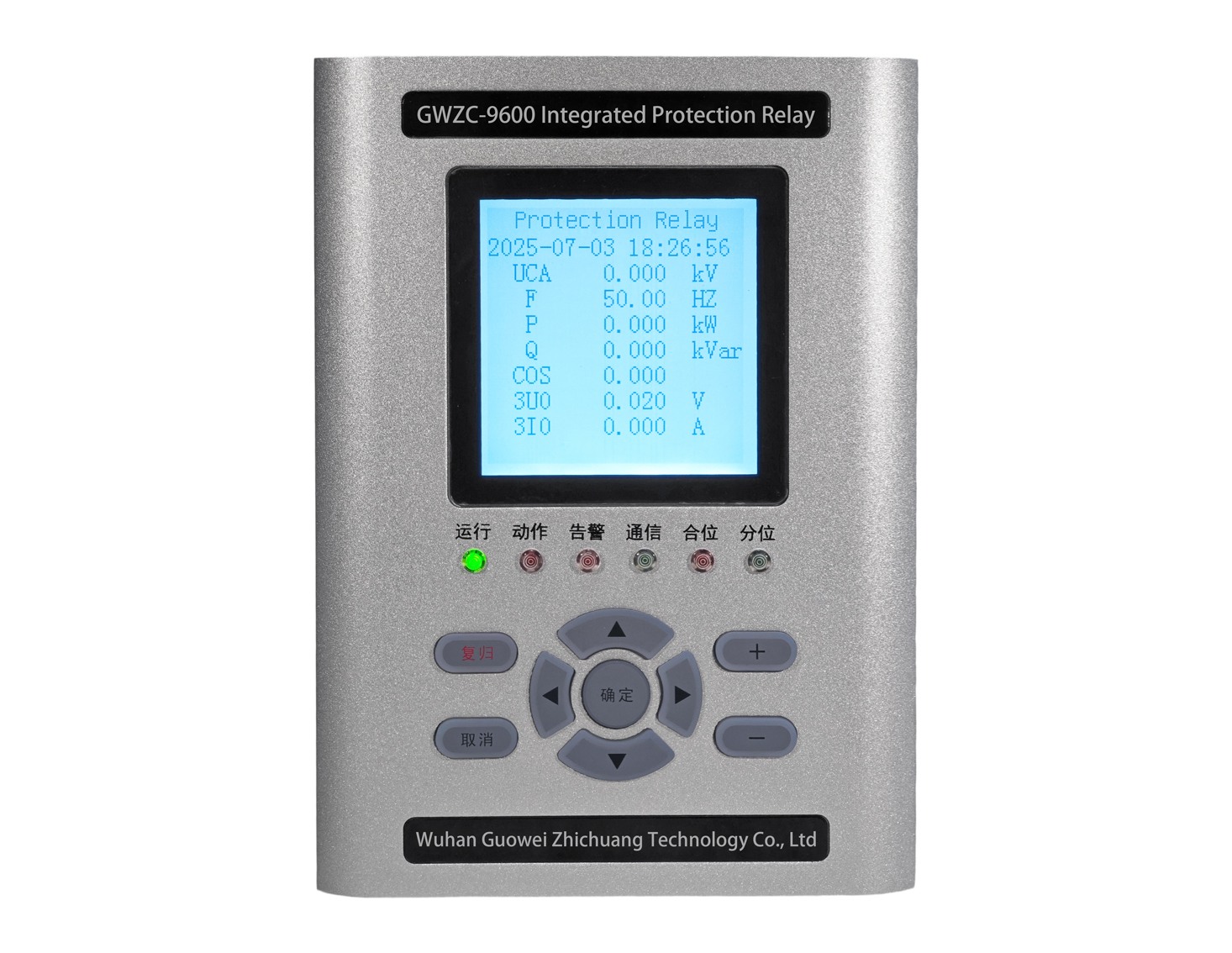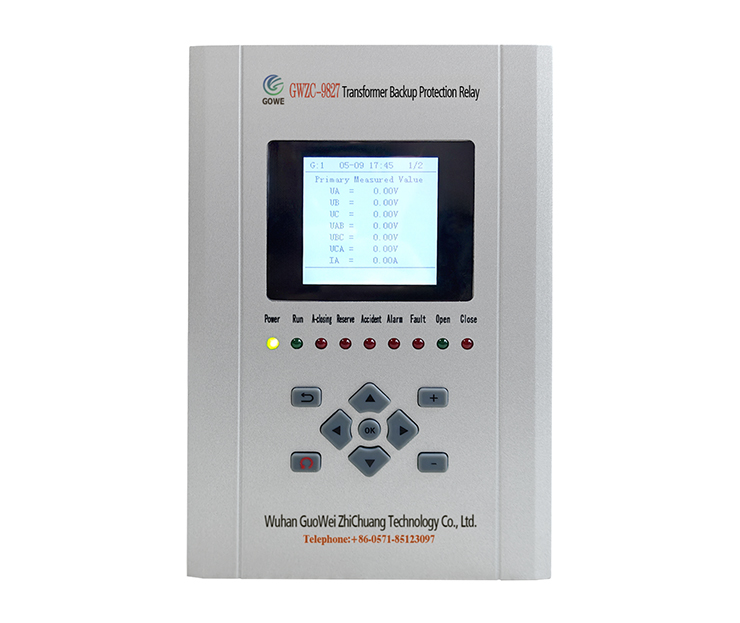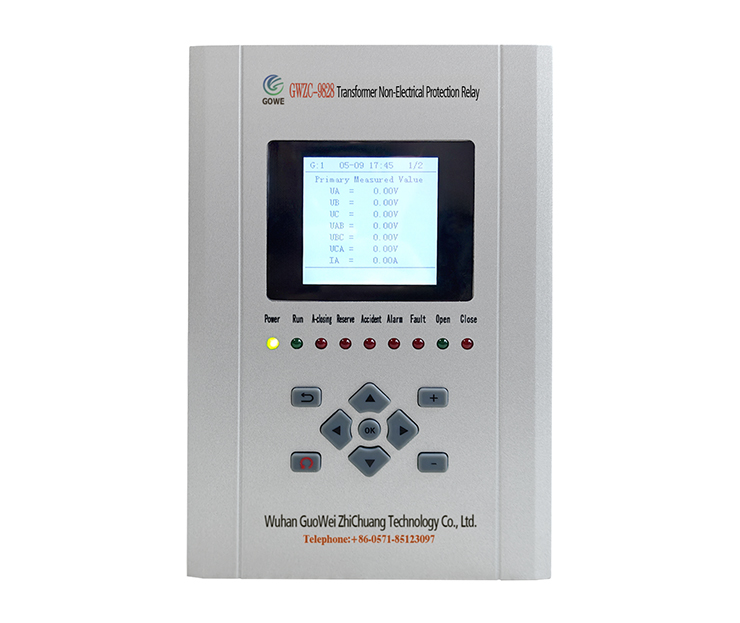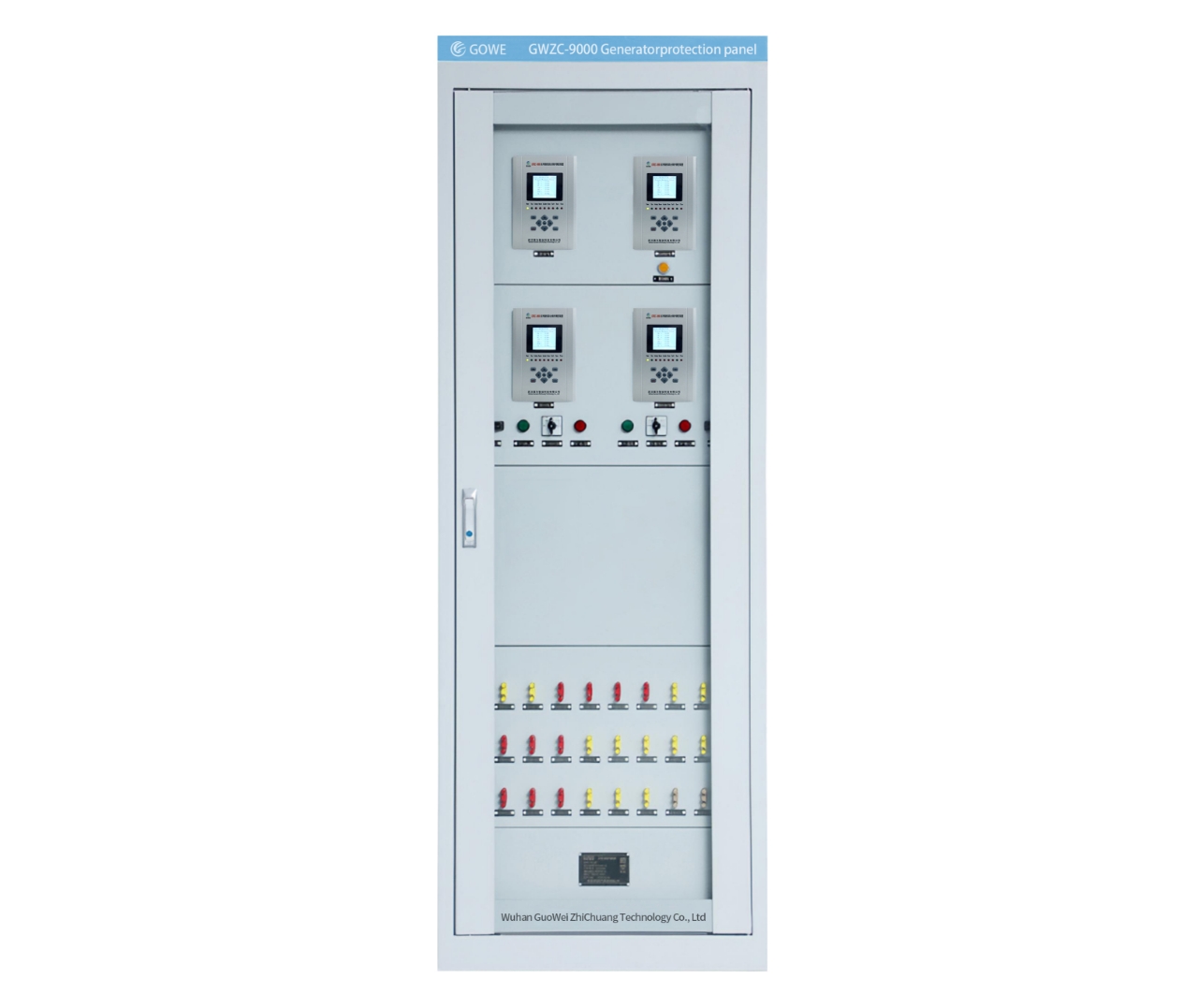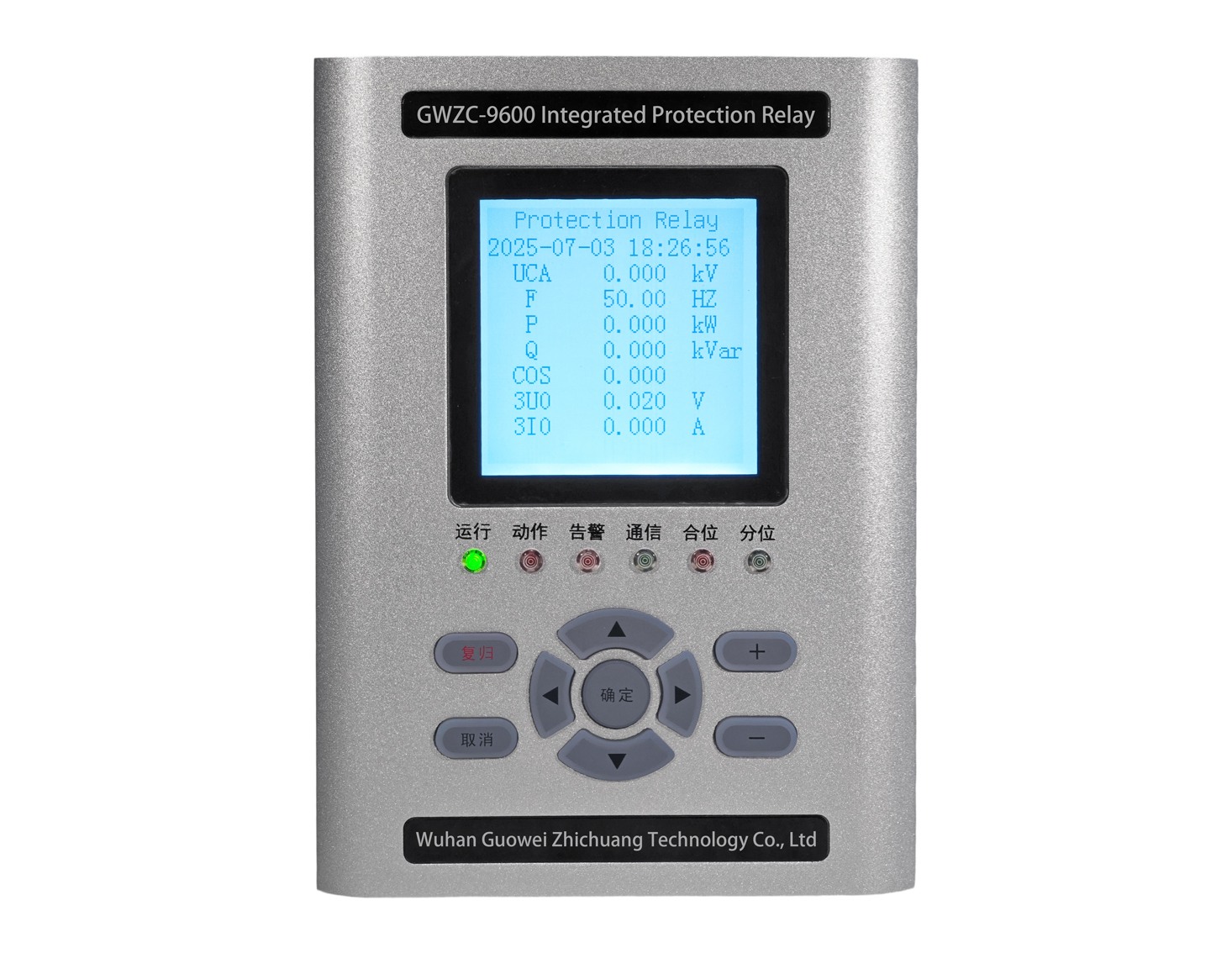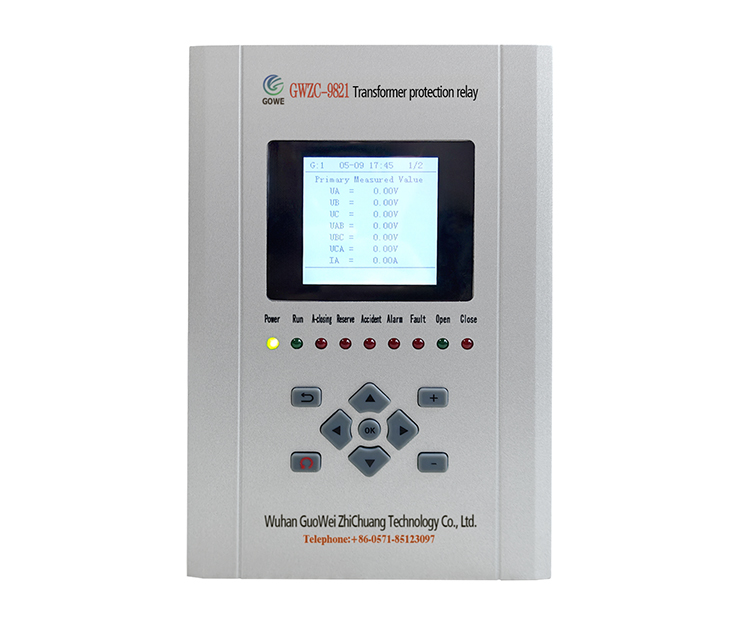
The fault phase voltage drops to zero (metallic grounding), while nonfault phases rise to line voltage (√3 times phase voltage). Line voltages remain balanced, ensuring threephase load operation.
A zerosequence voltage U0 = {UA + UB + UC}/3 appears, equal to the normal phase voltage (e.g., ~5.77kV in a 10kV system).
The fault current consists of capacitive currents from nonfault phases, calculated as ( 3ω C Uϕ) (where ( C ) is phase-to-ground capacitance).
Transformer protection relay devices can detect abnormal zerosequence currents, aiding fault identification.
Instantaneous capacitive discharge generates highfrequency transient currents (hundreds of Hz to kHz), with amplitudes 5-10 times the steadystate current.
Intermittent arcing may cause overvoltages (up to 3.5× phase voltage), threatening insulation.
A Transformer protection relay with arc detection can prevent equipment damage.
The neutral voltage shifts from zero to phase voltage, opposing the fault phase (e.g., UN = -UA for an A-phase fault).
Non-fault phase currents (B, C) have a 120° phase difference, summing at the fault point with a 90° lead over zero-sequence voltage.
Detects zerosequence voltage via PT opendelta windings (threshold: 15-30% of phase voltage).
Transformer protection relay systems enhance accuracy in fault localization.
Systems may operate for 1-2 hours but require prompt fault clearance to avoid phase-to-phase faults.
Highresistance grounding can cause resonant overvoltages, necessitating arc suppression coils (tuned to ±5% detuning).
~5-10nF/km (overhead lines), ~50-200nF/km (cables).
For a 10kV system with 20km lines ( C = 0.1u F ), steadystate fault current ( IC ≈ 5.5A ).
Transformer protection relay settings must account for capacitive current thresholds.
Ungrounded systems rely on capacitive current behavior during singlephase faults. Modern grids may use resistance grounding or arc suppression coils, but traditional ungrounded systems suit lowcapacitance networks (e.g., rural grids). Analysis requires realtime monitoring and Transformer protection relay integration for safety.
